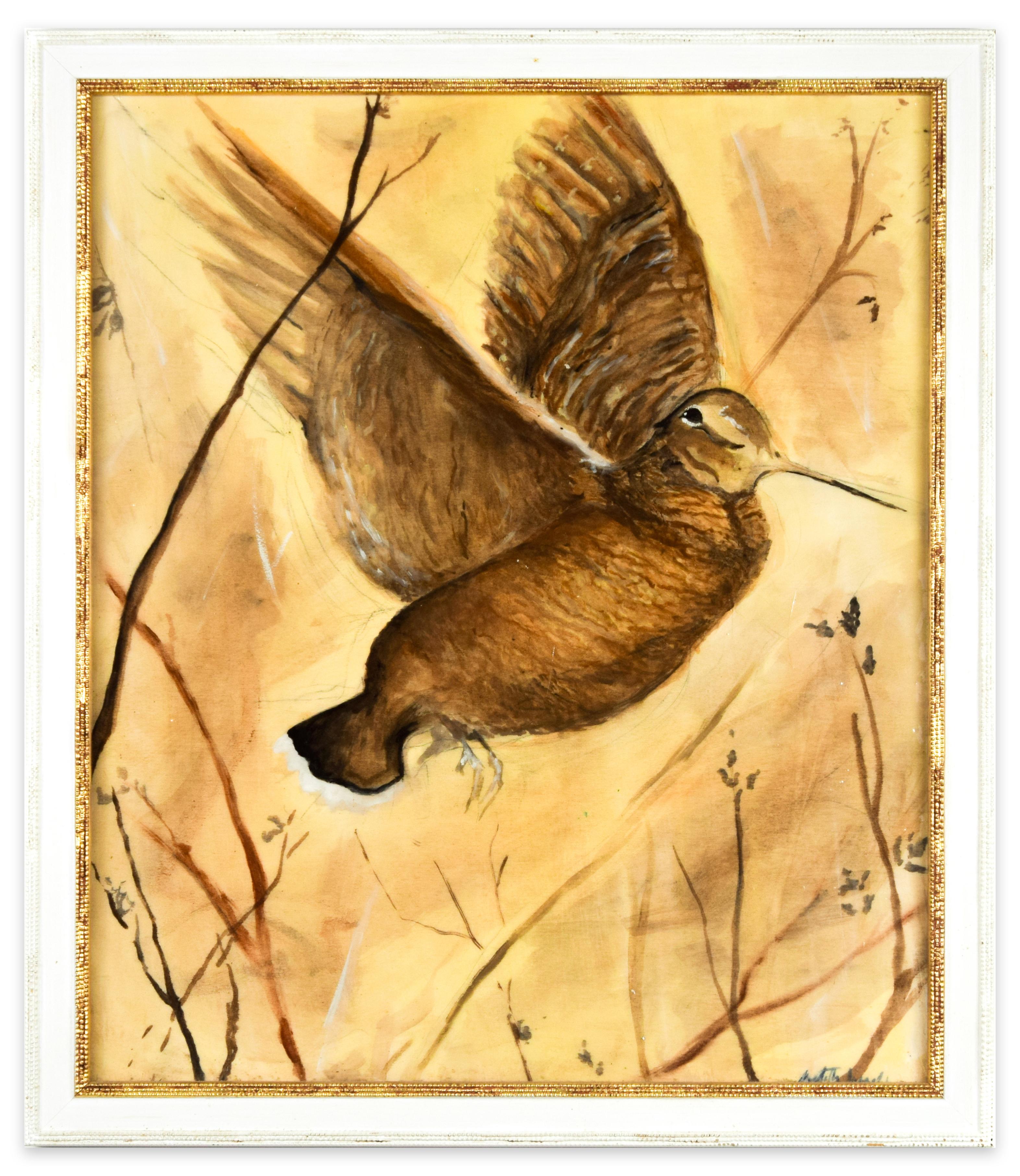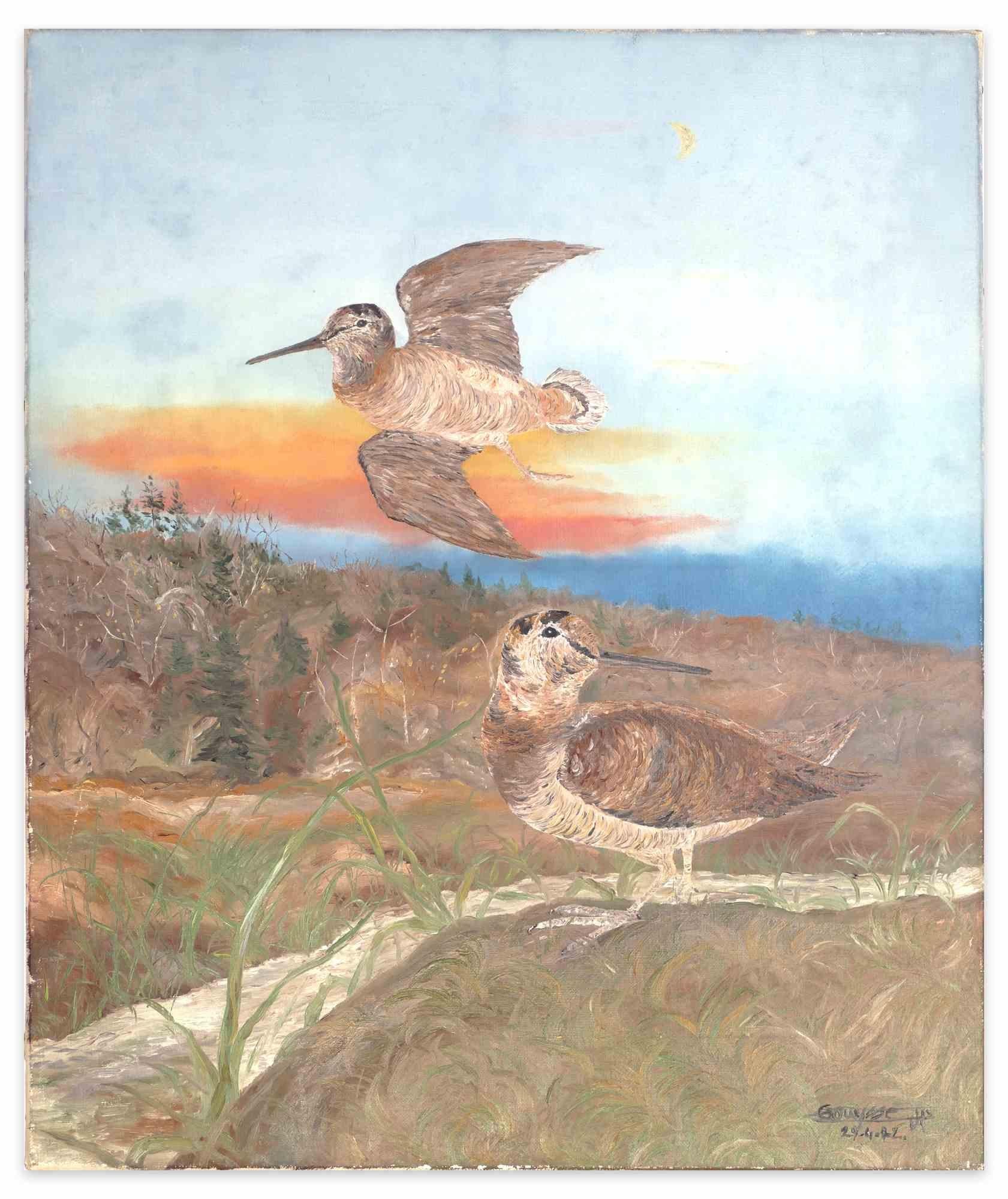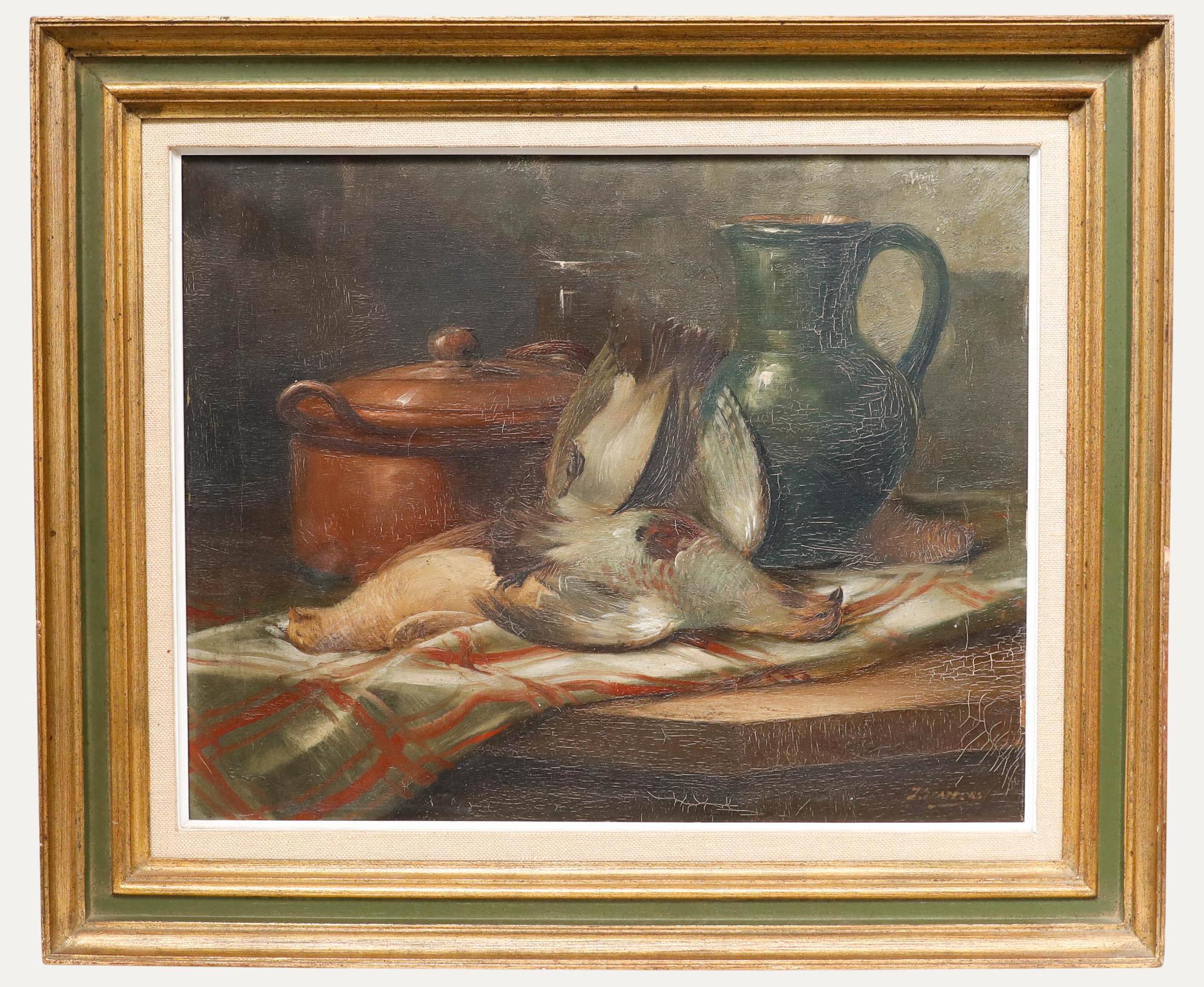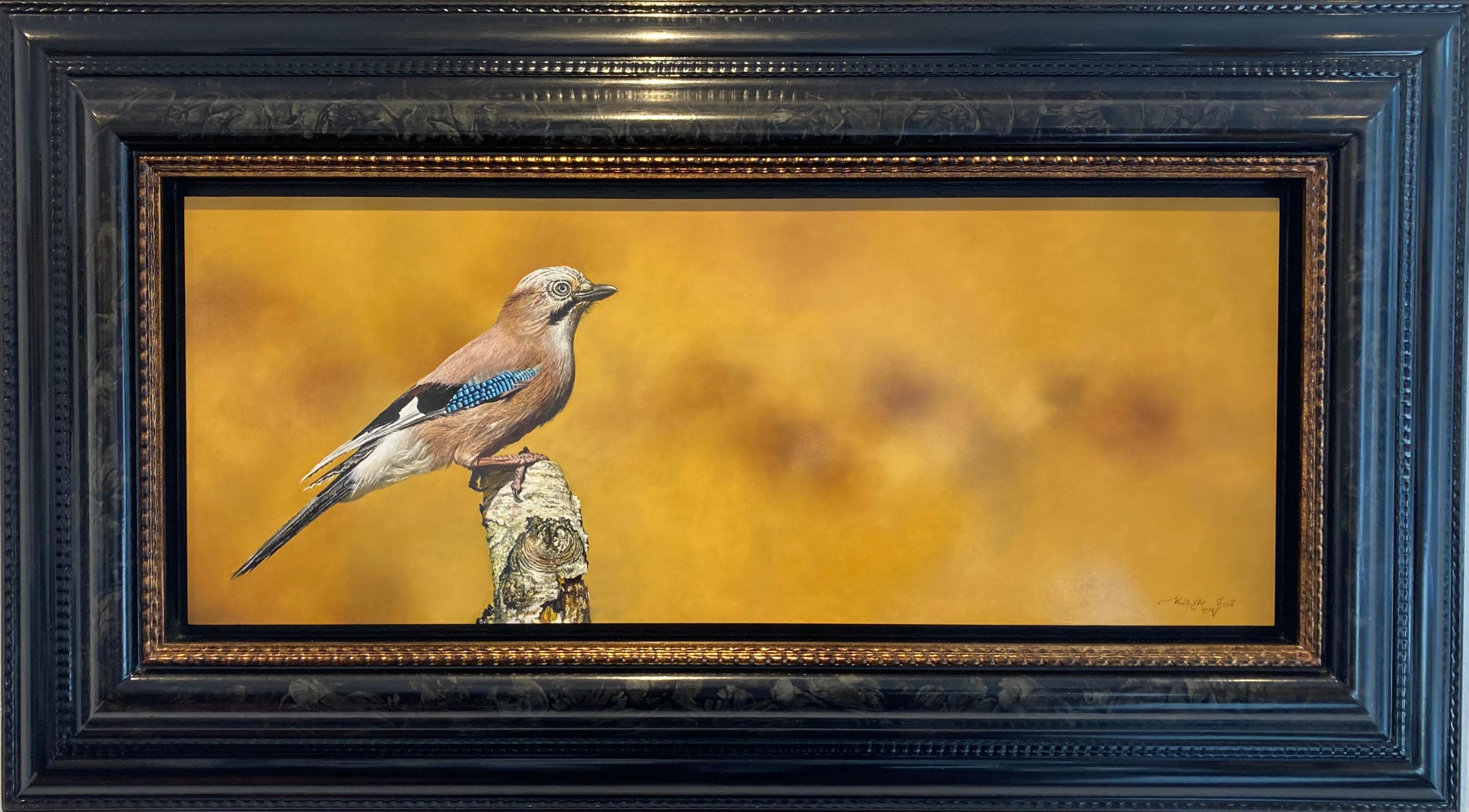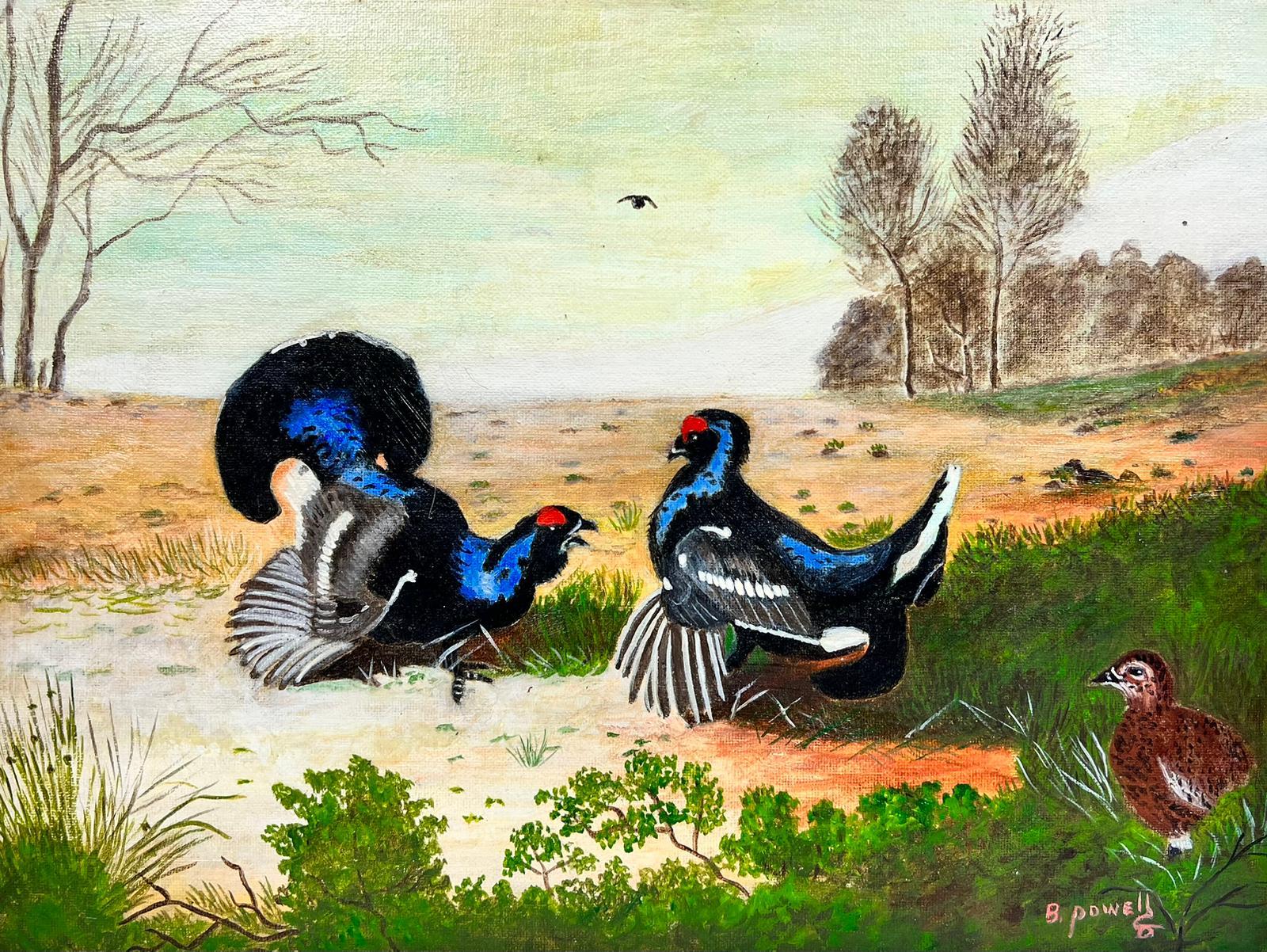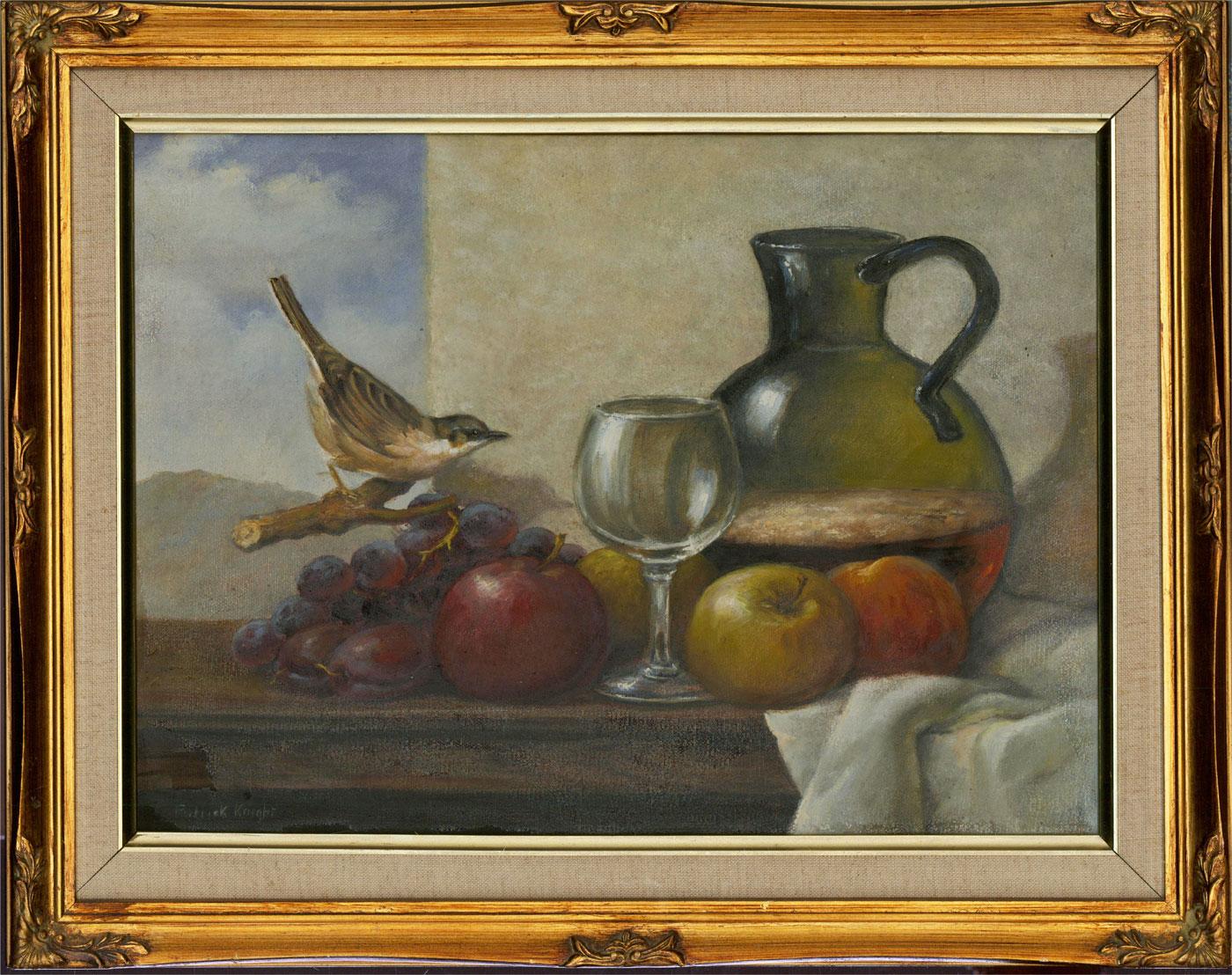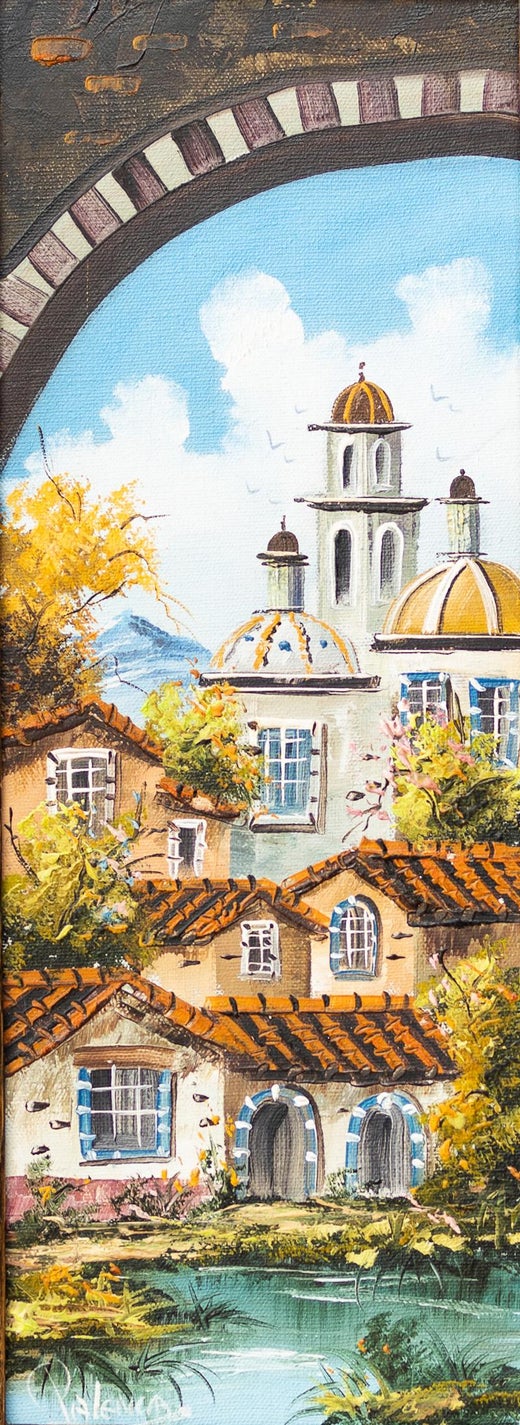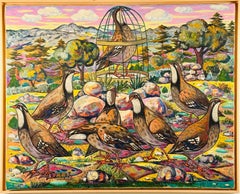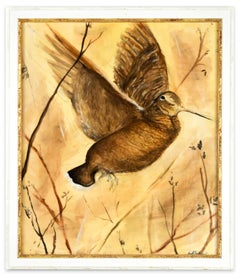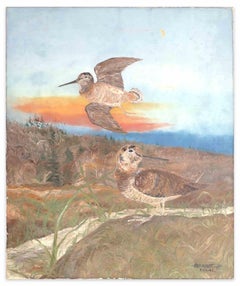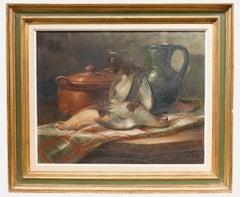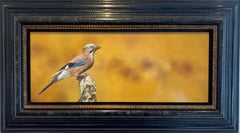Items Similar to "The Partridge", 20th Century Oil on Canvas by Spanish Artist Benjamín Palencia
Want more images or videos?
Request additional images or videos from the seller
1 of 13
Benjamin Palencia "The Partridge", 20th Century Oil on Canvas by Spanish Artist Benjamín Palencia1966
1966
$19,180.01
£14,248.06
€16,000
CA$26,633.65
A$29,063.48
CHF 15,244.29
MX$352,985.72
NOK 190,409.53
SEK 179,946.53
DKK 121,806.32
About the Item
BENJAMÍN PALENCIA
Spanish, 1894 - 1980
THE PARTRIDGE
signed & dated "B. Palencia, 66" (lower right)
oil on canvas
25-3/4 x 21-3/8 inches (65 x 54 cm.)
framed: 34-3/4 x 30 inches (88 x 76 cm.)
NOTE:
THIS WORK IS ACCOMPANIED BY A CERTIFICATE OF AUTHENTICITY Nº 129847 ISSUED BY IGNACIO DE LASSALETTA, EXPERT ON BENJAMÍN PALENCIA´S WORK.
PROVENANCE
Spanish Collector
Benjamín Palencia Pérez (Barrax, Albacete, July 7, 1894-Madrid, January 16, 1980) was a Spanish painter and illustrator, founder of the Vallecas School. In the broad set of his work, the poetics of the Castilian landscape defined by the generation of 98 stands out.
He is one of the main Spanish artists of the 20th century and one of the great artists of Spanish painting, a transformative piece of Castilian landscaping and an essential figure of the Spanish pictorial avant-garde of the 20th century. His prolific work consists of 600 paintings and 10,000 drawings.
He was the painter of the poets of the generation of 27, author of the logo of La Barraca by Federico García Lorca, a company of which he became artistic director. In his career he received numerous awards and recognitions, including the First Medal at the National Exhibition of Fine Arts (1943), the Grand Cross of Civil Merit (1958) or the Gold Medal for Merit in Fine Arts (1978).
Biography
He was born on July 7, 1894 in Barrax - a town located next to the capital of Albacete - in the bosom of a humble family, the ninth of eleven siblings. His father was probably a shoemaker. He lived in Barrax until approximately 1909, when he was 15 years old, he moved to Madrid accompanying his parents. In Madrid he met Rafael Gómez Egóñez, a rich and cultured civil engineer who for many years was his tutor and protector. In the capital of Spain he attended classes with Elías Tormo and copied Velázquez and El Greco at the Prado, and in 1917 he participated in an exhibition for young artists where an illustrious visitor, Juan Ramón Jiménez, became interested in him; This meeting gave rise to subsequent collaborations between the two. During this period he frequented the Student Residence where he met Francisco Bores and Salvador Dalí with whom he attended the Free Academy founded by Julio Moisés.
Creation of the Vallecas School
Together with the sculptor Alberto Sánchez, a participant, like him, in the Exhibition of the Iberian Artists Society at the Retiro Palace in Madrid, around 1929 they started what would later be called the first Vallecas School.
In 1925 he briefly passed through Paris, where he shared a studio with Pancho Cossio and made friends with other artists from the Bores circle, such as José Mari Uzelai and Manuel Ángeles Ortiz. On his return he spent a season in Alicante and Altea. In 1928 he exhibited the work of that period in the Palace of Libraries and Museums in the Spanish capital, with the support and backing of Rafael Alberti and José Bergamín. Despite protests from visitors to that first exhibition, Palencia exhibited again in the same place two years later, in the fall of 1930. In 1932 he began to collaborate in La Barraca by Federico García Lorca, making the scenography and the figurines for his montage of "Life is a dream", by Calderón.
In 1932 he made his third individual exhibition at the aforementioned Palace of Libraries and Museums. A year later, his exhibition at the Parisian gallery of Pierre Loeb aroused the admiration of Braque and Picasso and, apparently, gave him the opportunity to meet the 'staff' of French surrealism: André Breton, Louis Aragon and Benjamin Péret. In 1933 he collaborated with the Constructive Art Group assembled by the Uruguayan Joaquín Torres García, and participated in the exhibition organized at the Ateneo de Madrid that same year. The following year, his reflections on Italian painting were published in Bergamín Cruz y Raya's magazine.
Second School of Vallecas
During the civil war Palencia took refuge in his Madrid studio and in landscape painting, gradually abandoning experimentation. After the war, for three years it brought together some old followers and a handful of students from the San Fernando School of Fine Arts, Álvaro Delgado Ramos, Carlos Pascual de Lara, Gregorio del Olmo, Enrique Núñez Castelo and Francisco San José, among others. , in what Palencia himself baptized as El Convivio and which later became known as the second Vallecas School, embryo of the Madrid School.4 5
Last years
His need for silence and solitude led him, from 1941, to spend summers in the town of Serafín, his servant, Villafranca de la Sierra, in the province of Ávila. There, in a valley in front of the eras, 6 he ended up building, in 1953, a villa designed by his friend Luis Felipe Vivanco. The following year his beloved uncle Rafael passed away, who, in a final gesture of patronage, declared the painter heir to his property. His "vital guide" dead, 7 Serafín assumed that role, until his death in 1969, when it was his sister, Salomé Palencia, who took care of the painter.
Since 1942, the summers in Villafranca were completed with the autumns and winters in his apartment in Altea, a Levantine town that Benjamin had known since 19278 Later, in 1977, he left the apartment in Altea, moving the winter studio to his new home in Polop of the Marine.
In 1974 he entered the Royal Academy of Fine Arts of San Fernando in Madrid and four years later in the Catalan of San Jordi. On November 10, 1978, at the inauguration of the Albacete Museum (with an important donation of works by the artist, a total of 130), Queen Sofía announced the award of the Gold Medal for Merit in Fine Arts. Finally, in 1979, he bequeathed a large part of his work to the Spanish Museum of Contemporary Art. He died in Madrid on January 16, 1980 at the age of 85.9 In his testamentary memory there were 600 oil paintings and 10,000 drawings.
Stylistic evolution
Initially dazzled by a surrealism of zoomorphic and vegetal forms, he kept in his retina certain aspects of Cubism that were key in the schematization of his landscapes, undoubtedly the most representative of his abundant work. If in 1932 he joined the Constructive art group, after the civil war he practiced an austere realism, which recovers much of the poetics of the Castilian landscape, and leads to the so-called Iberian Fauvism that made him one of the pupils of Eugenio d ' Ors and his Brief Academy.
- Creator:Benjamin Palencia (1894 - 1980, Spanish)
- Creation Year:1966
- Dimensions:Height: 25.6 in (65 cm)Width: 21.26 in (54 cm)
- More Editions & Sizes:65 x 54 cm.Price: $19,180
- Medium:
- Movement & Style:
- Period:
- Condition:
- Gallery Location:Madrid, ES
- Reference Number:1stDibs: LU128119185612
Benjamin Palencia
Benjamín Palencia (7 July 1894 − 16 January 1980) was a Spanish painter and draftsman from Barrax, Albacete. Most notably he became known as co-founder of the School of Vallecas, together with the sculptor Alberto Sánchez Pérez.[1] The quintessence of the large body of his work is perhaps the poetry of the Castilian landscape as defined by the Generation of '98.
About the Seller
5.0
Vetted Professional Seller
Every seller passes strict standards for authenticity and reliability
Established in 1977
1stDibs seller since 2019
21 sales on 1stDibs
Typical response time: 3 hours
- ShippingRetrieving quote...Shipping from: Madrid, Spain
- Return Policy
Authenticity Guarantee
In the unlikely event there’s an issue with an item’s authenticity, contact us within 1 year for a full refund. DetailsMoney-Back Guarantee
If your item is not as described, is damaged in transit, or does not arrive, contact us within 7 days for a full refund. Details24-Hour Cancellation
You have a 24-hour grace period in which to reconsider your purchase, with no questions asked.Vetted Professional Sellers
Our world-class sellers must adhere to strict standards for service and quality, maintaining the integrity of our listings.Price-Match Guarantee
If you find that a seller listed the same item for a lower price elsewhere, we’ll match it.Trusted Global Delivery
Our best-in-class carrier network provides specialized shipping options worldwide, including custom delivery.More From This Seller
View AllPerdices y reclamo
Located in Madrid, ES
RAFAEL ZABALETA
Spanish, 1907 - 1960
PERDICES Y RECLAMO
signed "RZabaleta" (lower left)
oil on canvas
32 x 39-1/2 inches (81 x 100 cm.)
framed: 33-1/4 x 41-1/8 inches (84.5 x 104.5 c...
Category
1950s Naturalistic Animal Paintings
Materials
Canvas, Oil
"Espagnoles, 1971", 20th Century Oil on Canvas by Artist Emilio Grau Sala
By Emilio Grau Sala
Located in Madrid, ES
EMILIO GRAU SALA
Spanish, 1911 - 1975
ESPAGNOLES, 1971
signed "Grau Sala" (lower left)
signed again, dated and titled "Grau Sala, 1971, espagnoles" (on the reverse)
oil on canvas
1...
Category
1970s Post-Impressionist Figurative Paintings
Materials
Canvas, Oil
"Concentración", Early 21st Century Acrylic on Wood Panel by Artist Cesc Farré
Located in Madrid, ES
CESC FARRÉ I SENDRÓS
Spanish, 1972 -
CONCENTRACIÓN
signed “Farré i Sendrós” (lower left)
signed again, titled & dated “CESC FARRÉ I SENDRÓS / Cesc Farré / CONCENTRACIÓN / 2005” (on t...
Category
Early 2000s Figurative Paintings
Materials
Acrylic, Wood Panel
"Far Away Thoughts", 19th Century Oil on Canvas by Daniel Hernández
Located in Madrid, ES
DANIEL HERNÁNDEZ
Peruvian, 1856 - 1932
FAR AWAY THOUGHTS
signed "Daniel Hernandez" (lower right)
oil on canvas
27-1/2 x 19-1/4 inches (70 x 49 cm.)
framed: 39-3/8 x 31-1/8 inches (100 x 79 cm.)
Daniel Hernández Morillo...
Category
Early 1900s Realist Figurative Paintings
Materials
Canvas, Oil
“Paddock, 1961”, 20th Century Oil on Canvas by Spanish Artist Emilio Grau Sala
By Emilio Grau Sala
Located in Madrid, ES
EMILIO GRAU SALA
Spanish, 1911 - 1975
PADDOCK, 1961
signed "Grau Sala" (lower right)
signed again, titled & dated "GRAU SALA / PADDOK / 1961" (on the reverse)
oil on canvas
21-3/8 x ...
Category
1960s Post-Impressionist Figurative Paintings
Materials
Canvas, Oil
"Still Life" 20th Century Oil on Canvas by Spanish Artist Antoni Clavé
By Antoni Clavé
Located in Madrid, ES
ANTONI CLAVÉ
Spanish, 1913 - 2005
STILL LIFE
signed "Clavé" lower right
also inscribed "Ce tableau a ete peint par moi vers 1946, Clavé" on the reverse
oil on ...
Category
1940s Abstract Still-life Paintings
Materials
Canvas, Oil, Cardboard
You May Also Like
The Woodcock - Oil on Board by Mirtilla Durante - 2000s
Located in Roma, IT
The Woodcock is an original painting realized by Mirtilla Durante in the 2000s.
Includes frame: 66.5 x 2.5 x 56 cm
Signed on the lower right margin....
Category
Early 2000s Contemporary Animal Paintings
Materials
Oil, Board
Birds - Oil painting on canvas by Jean Pierre Gouysse - 1972
Located in Roma, IT
Birds is an original contemporary artwork realized by Jean Pierre Gouysse in 1972
Mixed colored oil painting on canvas.
Hand-signed and dated on the lower right margin
Jean Pierre...
Category
1970s Modern Figurative Paintings
Materials
Oil
Julien Stappers (1875-960) - Framed Oil, Still Life with Grey Partridge
Located in Corsham, GB
Julien Stappers (Belgian, 1875-960), oil on canvas. A classical still life depicting dead birds on a kitchen table, draped with a red and white cloth. Well presented in a green and g...
Category
Early 20th Century Still-life Paintings
Materials
Oil
Ruthless Rover Oil Painting on Panel Bird Realism Contemporary In Stock
By Walter Elst
Located in Utrecht, NL
Ruthless Rover Oil Painting on Panel Bird Realism Contemporary In Stock
Walter Elst Born in Antwerp, Belgium - 1955 After finishing his study Medicine at the University of Brussels...
Category
21st Century and Contemporary Realist Animal Paintings
Materials
Oil, Panel
Contemporary British Acrylic Painting Capercaillie/ Grouse in Landscape
Located in Cirencester, Gloucestershire
Birds
by Ben George Powell, British contemporary artist
signed
acrylic on board, unframed
board: 12 x 16 inches
provenance: private collection of this artists work, UK
The painting i...
Category
21st Century and Contemporary Modern Animal Paintings
Materials
Acrylic
$1,647 Sale Price
20% Off
Patrick Knight (1919-2014) - Contemporary Oil, Sparrow And The Bounty
Located in Corsham, GB
A charming oil still life showing a bounty of fruit and a green glass decanter and. A spirited little sparrow is perched on a twig, staring curiously at the feast before him. The art...
Category
21st Century and Contemporary Animal Paintings
Materials
Oil
More Ways To Browse
The Servant
Moises Vintage
1960 Spanish Oil Paintings
Louis Breton
Carlos Delgado
Manuel Angeles Ortiz
Salvador Dali Winter And Summer
Benjamin Palencia
Luis Felipe De La Torre
Ian Mason
Jaguar Painting
Lucie Sheridan
Old Master Dog
Pink Hunt Slonem Bunnies
Ratting Terriers
Collie Oil Painting
Dinosaur Painting
Equestrian Portrait Paintings
